Fatskhedera: features and care at home

Fatskhedera is a bright and spectacular plant, the main decorative advantage of which is its powerful five-lobed leaves. The flower is actively used in landscaping balconies and terraces, involved in the preparation of complex compositions in winter gardens and greenhouses, and also decorate the halls of public buildings and spacious living rooms with it.
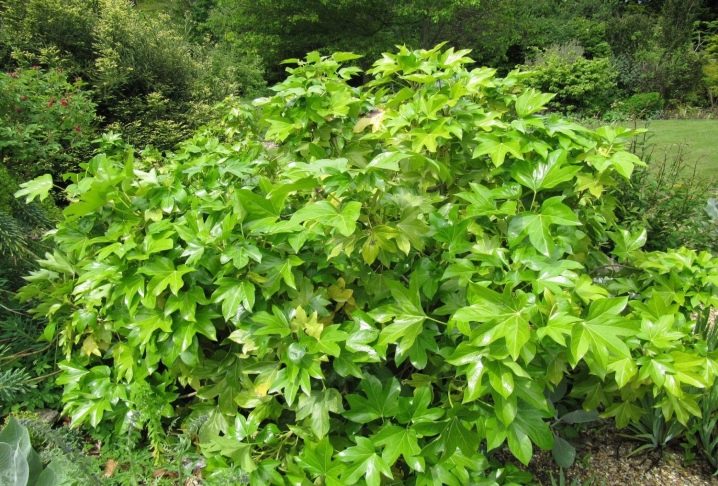
Description
Fatskhedera is a hybrid species obtained as a result of breeding work. Its authors are the French naturalists brothers Lise, who in the distant 1912, by crossing Japanese fatsia with common ivy, received this beautiful flower. It was in their honor that the plant received the botanical name Fatshedera lizei (lat.Fatshedera lizei), under which it was included in scientific reference books.
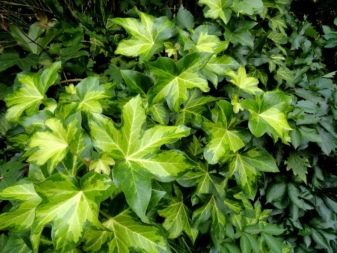

The flower belongs to the Araliev family and is a lush bush with large beautiful leaves. When grown at home, the plant reaches a height of 1.2 m, while in natural conditions it grows up to 5 m. Due to its rapid growth, fatsheder is often used for vertical gardening of terraces and facades, tying the stems to supports and forming them like a vine. Adult shoots are able to rise to a height of 4 meters and almost completely cover the walls of houses and fences.
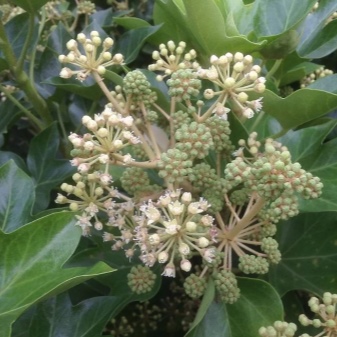

Fatshedera leaves consist of 3-5 lobes and often reach a length of 25 cm. The leaf plates are bright green and have a beautiful uniform gloss. The genus also contains several variegated forms, the leaves of which are decorated with light spots or a border. The stems of the flower are erect and weakly branched, woody over time. The average annual growth of shoots reaches 30 cm, which allows you to get a hedge or a balcony over several seasons.
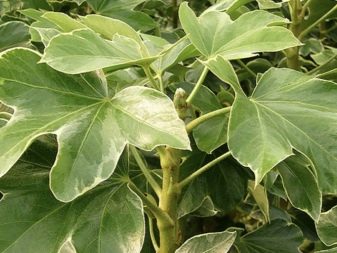
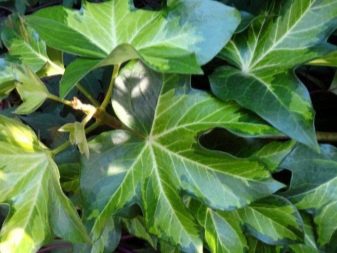
In the autumn period, umbrella-type inflorescences appear from the leaf sinuses, consisting of small nondescript flowers reaching 4-6 mm in diameter. The fruit is a round, dark blue or purple berry containing a few small seeds. The plant has a fibrous root system, and the root processes also become lignified over time.
Views
Fatskhedera has several varieties.
- "Variegata" differs in the presence of a wide white stripe on its fleshy leaves. The hybrid is not distinguished by good health and rapid growth and is valuable only due to the high decorativeness of the leaves. However, they stay on the stems for a relatively short time and fall off rather quickly.


- "Pia" very beautiful and hardy, it is distinguished by powerful dark green leaves with wavy edges and short petioles. Because of this structure, the leaf plates are tightly pressed against the vine and create a large load on the erect stem. Under the weight of the leaves, the shoot begins to droop over time and requires the construction of a support.
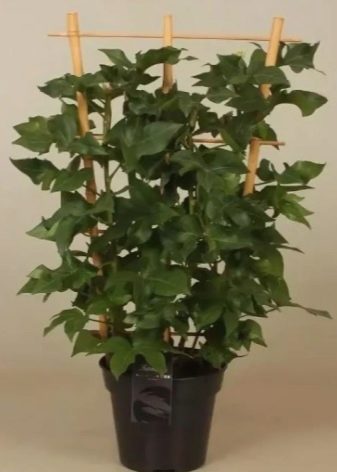
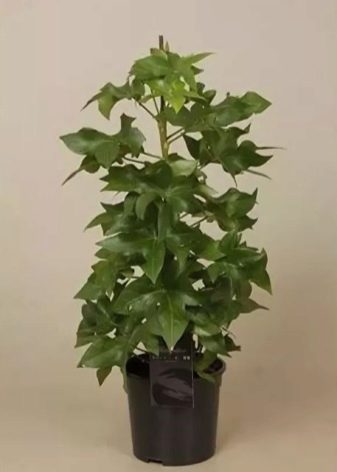
- "Silver Prince" - another variegated form with a narrow silvery border on the leaves. The plant looks very festive and looks great in the home interior.
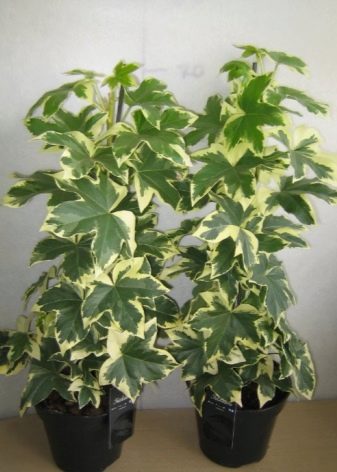
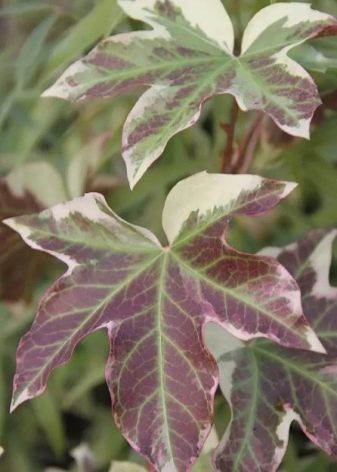
- Fatskhedera "Golden" is also quite beautiful and is distinguished by yellow spots in the middle of the leaf plates. The flower can be grown both in the apartment and on the street, it is characterized by rapid growth and high decorativeness.
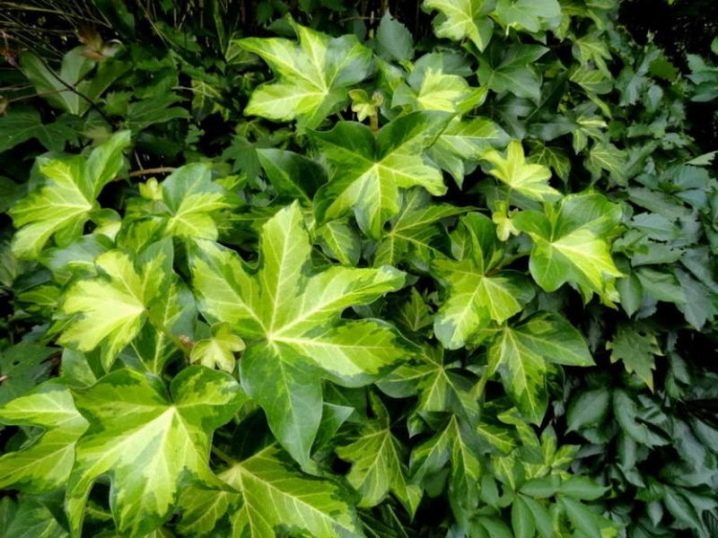
Home care
Caring for any of the varieties of Fatshedera does not present any particular difficulties and consists in creating certain conditions of temperature, humidity and illumination, as well as in timely watering, feeding, pruning and transplanting plants.
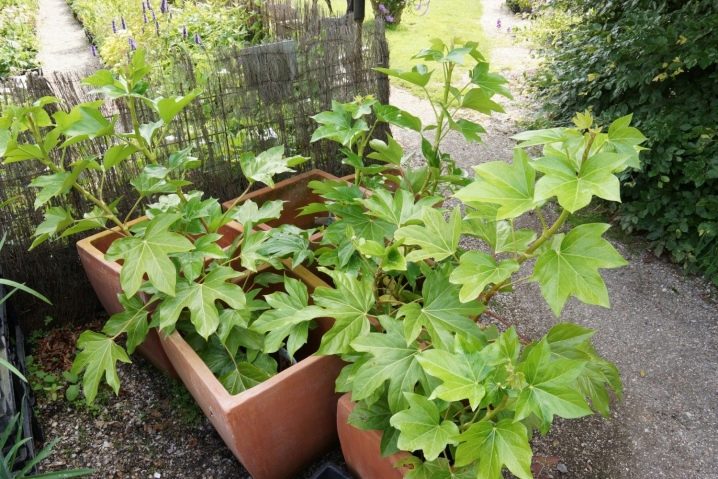
Lighting
Fatskhedera requires bright, diffused light and does not tolerate direct sunlight. Plants with monochromatic leaves are best suited to a moderately shaded area, while variegated varieties need lighter spaces. Otherwise, due to a lack of light, the leaves will begin to fade, and their pattern will become poorly visible. It is better to place Fatskheder in bright rooms at some distance from windows, where the flower will receive a sufficient amount of light, but at the same time the sun's rays will not be able to burn its leaves.
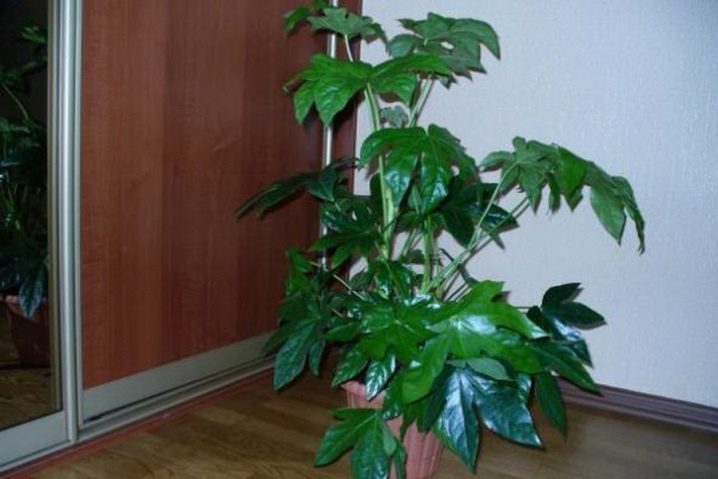
For the summer period, it is advisable to put indoor fatsheads on the balcony or take them out to the dacha, where in the fresh air they noticeably increase in growth and gain strength. The only condition for outdoor maintenance is protection from direct UV rays and drafts. The latter requirement is due to the fact that a gust of wind can knock down the support and confuse the stems of the vine.
Temperature and humidity
Fatskhedera is quite unpretentious and does not need to create special conditions for it. The plant feels great at a normal room temperature of 18-23 degrees and high humidity. In rooms with dry air, the plant requires additional moisture. To do this, 2 times a week it is sprayed with soft settled water and once a year bathed under a warm shower. In winter, when the heating radiators are working, pallets with wet moss, river pebbles or expanded clay are placed next to the flower, or an electric humidifier is turned on.
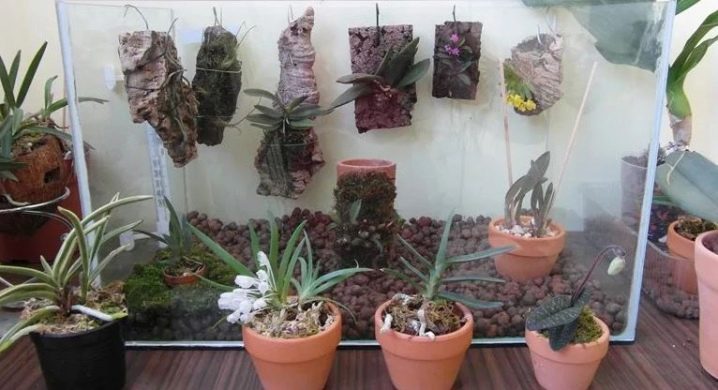
In extreme cases, you can place an aquarium with water or any other wide container near the fatshedera. In the cold season, spraying is stopped and the vine is placed in a cooler place with a temperature of 10 to 15 degrees. The only exceptions are variegated varieties, which do not tolerate temperatures below 15-16 degrees and must winter in a warmer room. If the temperature in the room is above 20 degrees, then irrigation continues in winter.

Watering
Water the bush in small portions, using soft warm water. The regularity of humidification depends on the temperature of the room air: the lower it is in the room, the less often the fatshedera is watered. The plant does not tolerate cold dampness, from its excess it can get sick and die. It is also impossible to allow liquid stagnation in the pot. This can provoke the appearance of fungal infections and cause rotting of the roots.
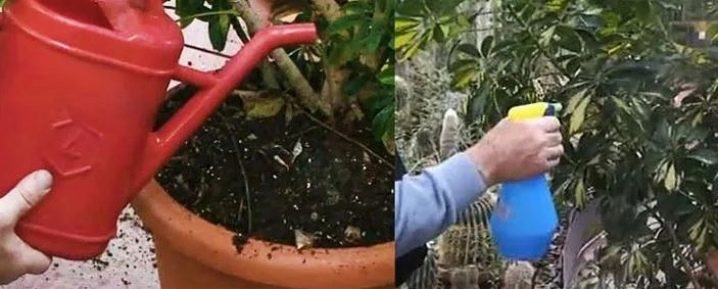
Watering the plant is necessary only if the top layer of the substrate is completely dry. At the same time, the earthen lump is still in a low-moistened state and requires regular watering. At a normal room temperature of 20-25 degrees, the fatsheder will have to be watered 2-3 times a week, while in winter - once every 7 or even 10 days. In no case is excess liquid left in the pan and is poured out after a couple of hours.
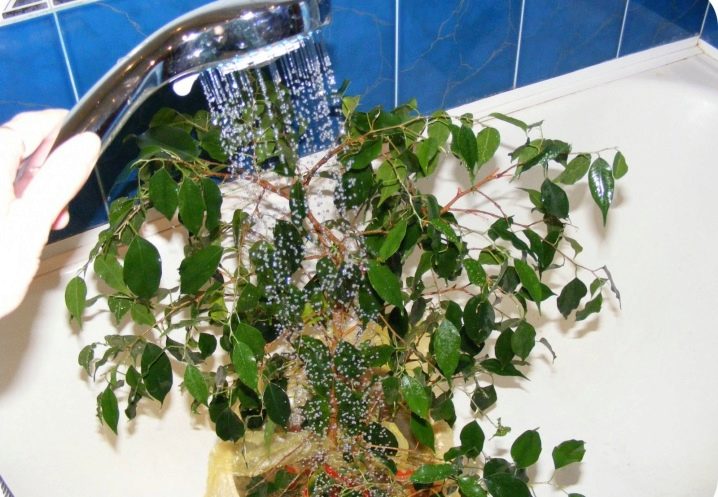
Top dressing
Fatskhedera requires regular fertilization, which is performed 2 times a month throughout the growing season - from March to October. Any mineral complex for deciduous plants is used as additives, alternating with organic preparations. In winter, the plant is dormant and does not need feeding.
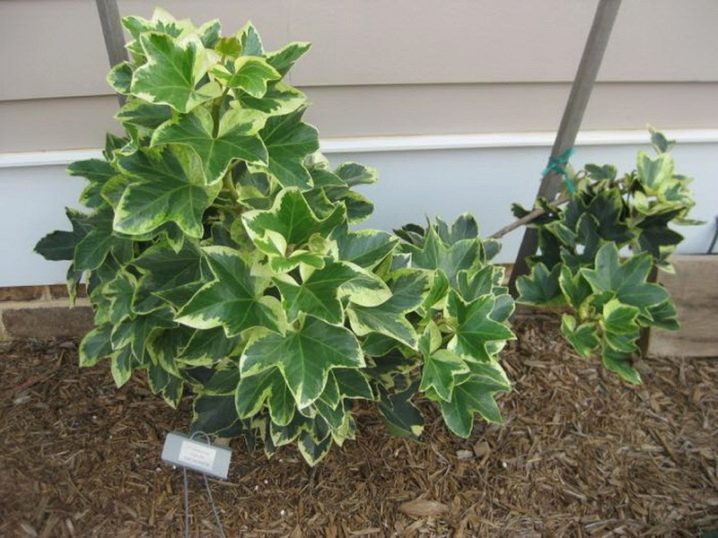
Pruning and shaping the crown
Fatskhedera is a fast growing plant and therefore needs regular pruning and pinching. On old shoots, the leaves begin to crumble over time, and the stem becomes bare. In order to prevent this from happening and the flower does not lose its decorative properties, the old branches are shortened by half, and the tops of the young shoots are pinched. To form the crown, special arched structures or straight supports are used, directing the branches of the vines along them and adjusting the density of the leaves.If you want to radically rejuvenate the fatshedera, all stems are cut to a length of 30 cm.
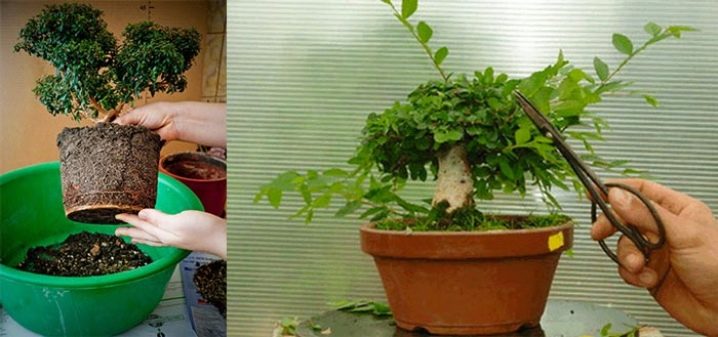
Transfer
Young vines under three years old are transplanted once a year. Then they look at the volume and condition of the root system and perform a transplant every 2-3 years. In case of rotting roots or other diseases, an emergency transplant is allowed. If the plant does not grow very quickly and does not need a larger container, then it is enough to remove the top layer of the substrate annually and change it to a fresh one. Any planned transplant is performed in early spring, before the flower enters the active growth phase. Emergency transplants are carried out as needed, not focusing on seasonality.
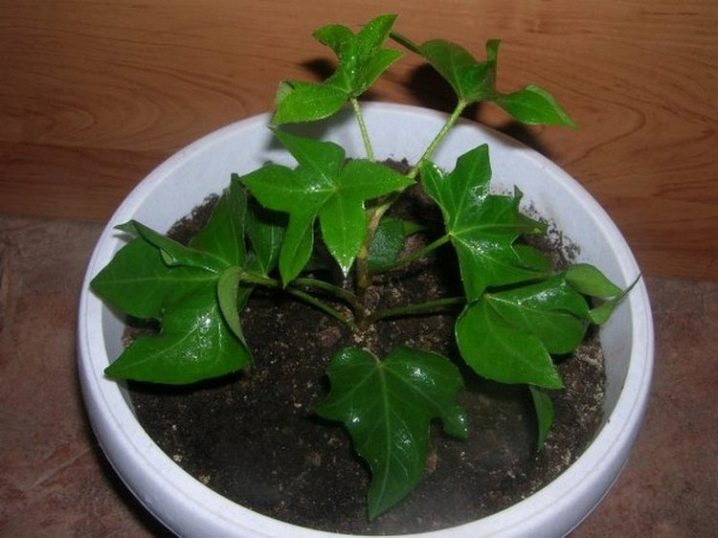
The substrate for planting and transplanting fatsheders can be purchased at the store or prepared on your own. To do this, take one part of the garden soil, turf, peat and fine sand, mix well and clean it from small debris and residues of vegetation. Then the prepared mixture is spread in a thin layer on a baking sheet and sent to the oven for disinfection. Calcination is carried out for 20 minutes at a temperature of 220 degrees. If there is no opportunity to use the oven, then the substrate is placed in a perforated container and spilled with boiling water.
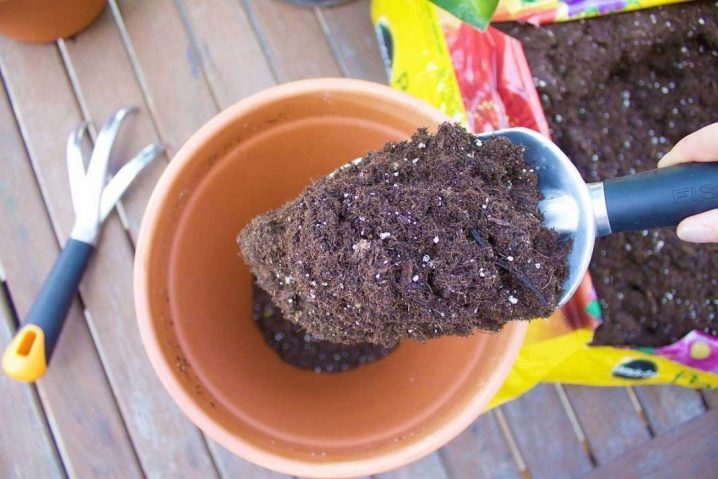
Then a new pot is disinfected and a drainage layer with a thickness of at least 3-4 cm is laid on its bottom. For this, expanded clay, river pebbles, red brick or clay shards are used. The Fatshedera pot must be very stable, able to withstand the roll of heavy leaves and the weight of the supports. Its size should be 2-3 cm larger than the previous one, and the bottom must have several holes to ensure the outflow of excess liquid.

Fatsheders are transplanted by the transshipment method, trying to preserve the integrity of the earth lump as much as possible. To do this, moisten the soil in an old pot and carefully separate it from the walls of the pot with a wooden stick. Then the plant is moved into a new container, the missing substrate is poured on the sides and lightly tamped. Next, the flower is watered, if necessary, add soil and place it in its original place.

Reproduction
Fatshedera is propagated in two ways: by cuttings and with the help of seeds.
- Growing from seeds for reproduction is not often used by Fatsheders. For planting, a seedling substrate is used, which already includes all the components necessary for the development of seeds. The seeds are evenly distributed over the surface of the soil and sprinkled on top with a thin layer. Then, from a fine spray, the planting is moistened and covered with glass or plastic wrap. A transparent plastic container with a lid can be used as a container. After sowing the seeds, the temperature inside the container is maintained at not lower than 27 degrees, the substrate is ventilated daily for 15-20 minutes and, if necessary, sprayed. After the first shoots appear, the lid is removed and 2-3 true leaves are expected to form. Then young shoots dive into different containers and are transferred to the general care regimen.
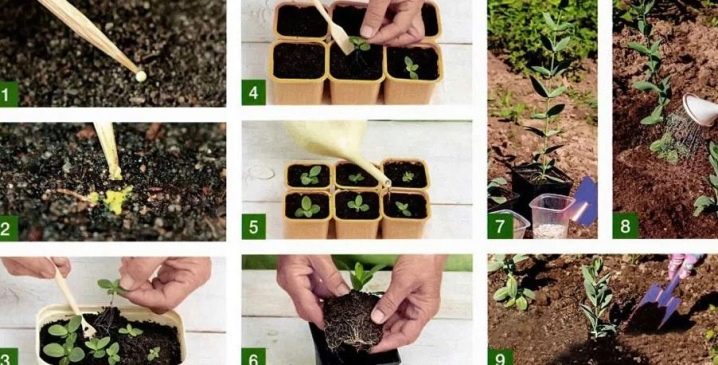
- Cutting is the simplest way of propagation and consists of the following: a 15 cm long top with several buds is cut off from a strong shoot and buried in wet sand. After planting, the shoot is covered with a glass jar and aired daily. In this case, the air temperature should be 20-24 degrees, and the lighting should be bright and diffused. As soon as 2-3 new leaves are formed on the sprout, the cap is removed, and the shoot is transplanted to a permanent place.
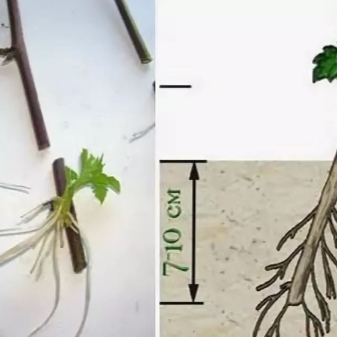
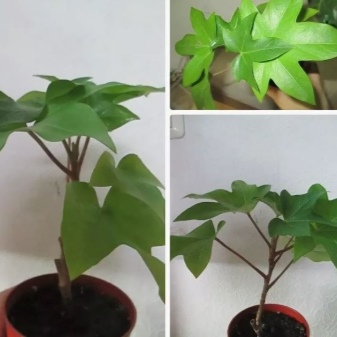
Growing difficulties
Fatskhedera is a fairly strong plant and often suffers not from diseases, but from improper care.
- If the flower turns yellow and sheds leaves, then the point is too abundant watering.
- If the leaves begin to wrinkle, and their tips dry out, then the reason is excessive dryness of the air and insufficient moisture.
- Dry, pale brown spots indicate sunburn and require shading.
- A fluffy gray coating may indicate cold dampness and the appearance of powdery mildew.
- If the lower part of the stems has turned black, and leaves fall from the bush, this indicates rotting of the roots and requires an immediate plant transplant.
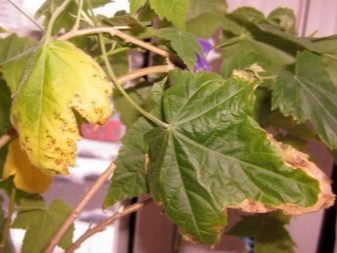
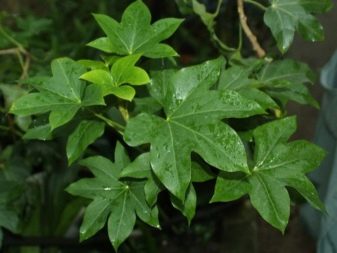
Of the pests, Fatshedera is most often affected by spider mites, aphids and mealybugs. At the initial stage of their appearance, treating the bush with soapy water will be enough, and in advanced cases only insecticides will help.
For information on how to properly care for a fatshedera, see the next video.























The comment was sent successfully.